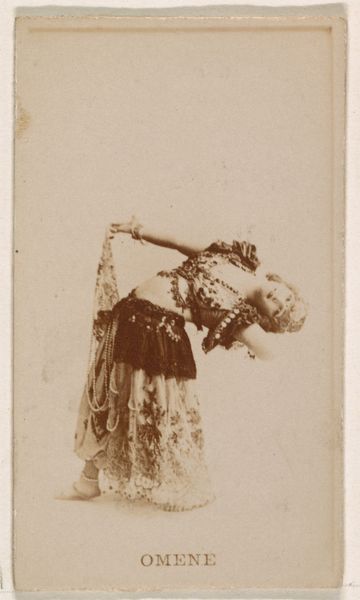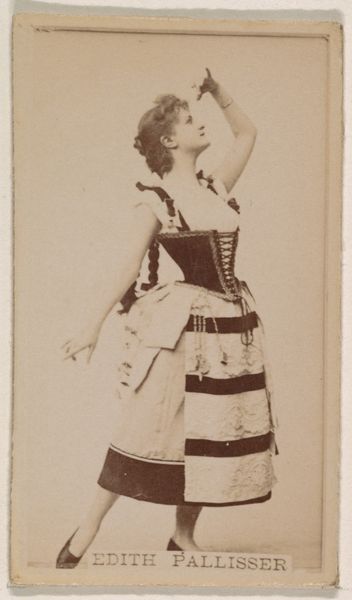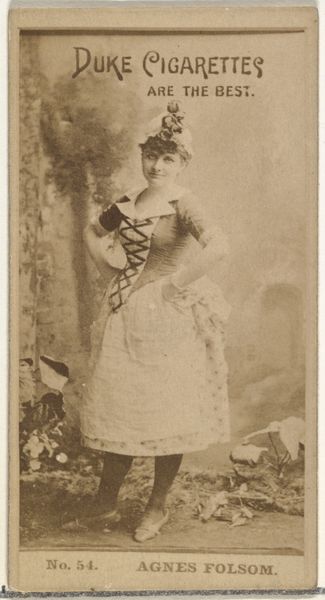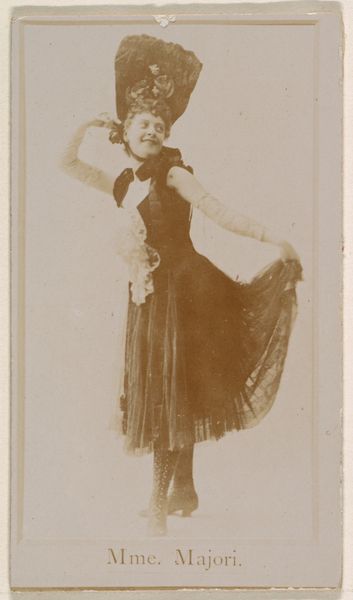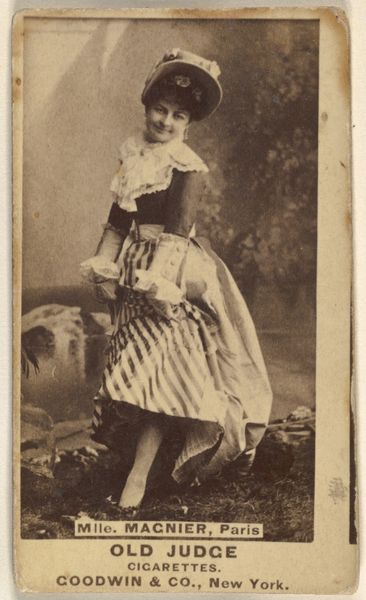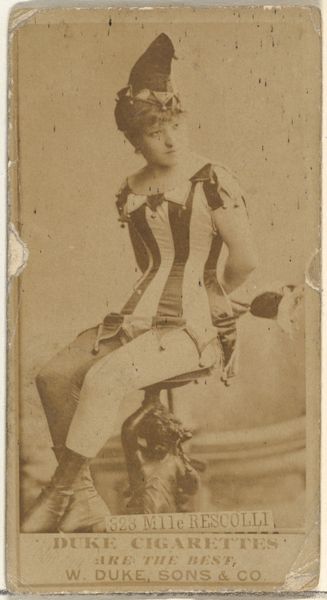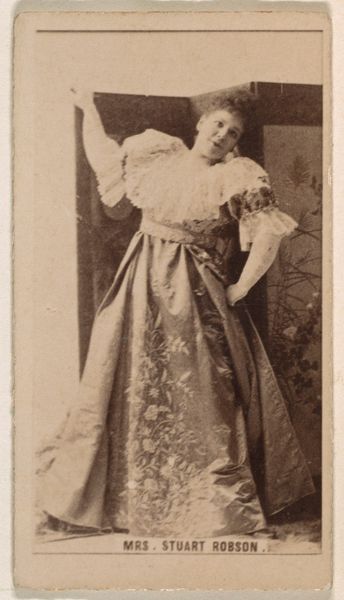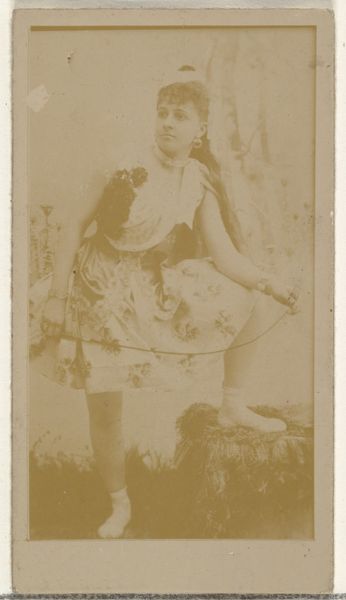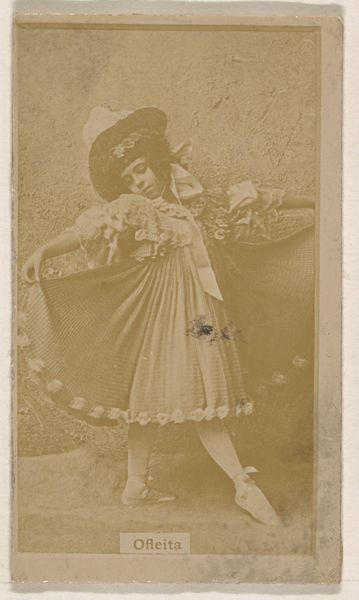
Belle Stewart, from the Actresses series (N245) issued by Kinney Brothers to promote Sweet Caporal Cigarettes 1890
0:00
0:00
print, photography
#
portrait
# print
#
figuration
#
photography
Dimensions: Sheet: 2 1/2 × 1 7/16 in. (6.4 × 3.7 cm)
Copyright: Public Domain
Editor: We're looking at "Belle Stewart," a print from 1890 by the Kinney Brothers Tobacco Company. It seems to be a promotional portrait. I find the composition striking; she’s off-center, almost mid-gesture. What visual elements stand out to you in this piece? Curator: The most prominent formal aspect is the dynamic tension created by the subject's pose. Her off-kilter stance and extended arms produce a sense of imbalance that is visually stimulating. Note, also, the interplay of light and shadow; observe the gradation on her skirt as it emphasizes form. The various layers of the clothing work together, too, to create a structured, dynamic composition, despite the two-dimensional plane. Do you see how the photographer played with lines to give volume? Editor: Yes, definitely, the way the ruffles and fabric fold create interesting lines and shapes that suggest depth and movement! I can see now the clever contrast that’s made. It makes me think about…does the photograph also reflect ideas about beauty that are valued, and, perhaps, commodified at that time? Curator: That's a valid observation. Focusing on solely internal elements—how the lines, light, and form function on the photograph's surface to establish a specific type of visual effect—can offer deeper insights. Thinking about how these forms operate, however, requires careful inspection of the subject; notice the gesture, which amplifies her visual presence and emphasizes the photographic effect, turning an advertisement into an object worthy of display in a gallery. Editor: I appreciate how you broke down the formal elements; it shifts my attention away from external, historical narratives, allowing me to perceive her performative role within this image. Curator: Indeed, the essence of art lies within its formal language; let us not obfuscate this.
Comments
No comments
Be the first to comment and join the conversation on the ultimate creative platform.
